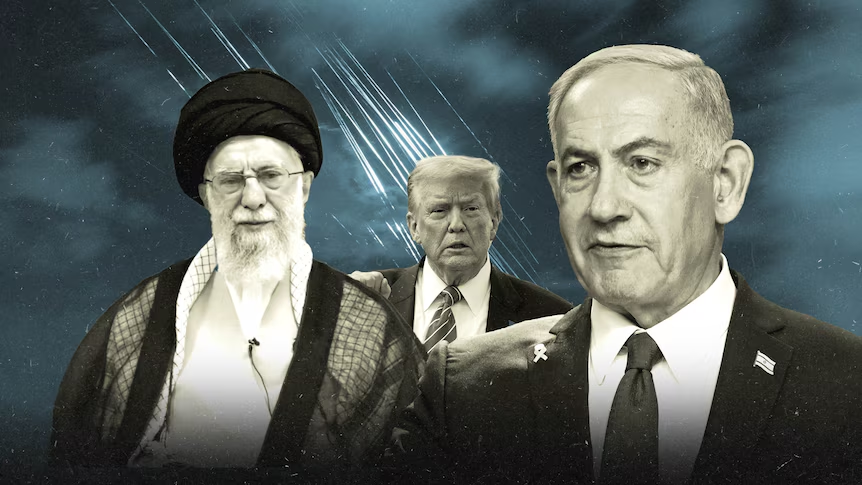It has been a chaotic two weeks since Israel launched its surprise attack on Iran, igniting a war between the regional powers.
At least 627 people have been killed in Iran and 28 in Israel, according to authorities in each country.

Thousands more were injured in the 12 days of relentless back-and-forth strikes.
A ceasefire brokered by the US — days after it bombed Iran’s key nuclear facilities — appears to be holding for now.
But in what has been a fast-moving and often murky information landscape, many questions remain.
How close was Iran to developing nuclear weapons?
There is no clear, definitive timeline on how close Iran was to developing nuclear weapons.
In March, US Director of National Intelligence Tulsi Gabbard said the country’s “intelligence community continued to assess that Iran is not building a nuclear weapon”.
Last Wednesday, before the US bombed Iran’s nuclear sites, President Donald Trump said Ms Gabbard, and the US intelligence community, were wrong.
The justification for Israel launching its attacks on Tehran two weeks ago was based on a report from the International Atomic Energy Agency.
It found that Iran had failed to comply with its nuclear obligations for the first time in almost 20 years.
It said Iran’s uranium had reached about 60 per cent enrichment. Once uranium is enriched to 90 per cent, it is deemed weapons-grade.
Civilian nuclear power uranium is usually enriched to about 3 to 5 per cent.
In early June, the US Institute for Science and International Security said Iran could convert its stockpile of 60 per cent enriched uranium into 233kg of weapon-grade uranium in three weeks.
The institute estimated that would be enough for nine nuclear weapons.
What damage has been done to Iran’s underground nuclear facilities?
The only consensus among experts is that the severity of the damage is still unknown.
US President Donald Trump claimed the three key nuclear facilities the US bombed — Fordow, Natanz and Isfahan — had been “obliterated”.US strikes only set Iran’s nuclear program back by months, leaked intelligence says
Photo shows A satellite image of the Fordow nuclear site.
US media reports say leaked intelligence has cast doubt on US President Donald Trump’s assertion that Iran’s nuclear facilities have been “obliterated”.
America’s top military officer, General Dan Caine, also said an initial assessment found all three sites “sustained severe damage and destruction”.
ABC Verify examined satellite imagery of the facilities, speaking to experts from the Institute for Science and International Security (ISIS).
It found it was highly likely that Fordow’s enrichment halls were severely damaged or even destroyed, the Natanz site was “likely destroyed” and Isfahan had sustained heavy damage to its main uranium conversion facility.
A US intelligence leak, acknowledged by the Trump administration, has cast doubt on claims the nuclear facilities had been obliterated.
The classified assessment found Iran’s nuclear program had only been set back by a few months.
The preliminary report was made by the Defense Intelligence Agency, an arm of the Pentagon.
US Defense Secretary Pete Hegseth said that leaked initial assessment was “low-confidence” and had been overtaken by intelligence showing Iran’s nuclear program was severely damaged by the strikes and that it would take years to rebuild.
Is it possible Iran moved its enriched uranium before the strikes?
There are no clear answers about whether Iran moved its enriched uranium before the US struck the three nuclear sites.
The International Atomic Energy Agency (IAEA) report detailed that Tehran had amassed 408.6kg of uranium enriched up to 60 per cent.
Iran has claimed about 400kg of it was moved before the US dropped the so-called “bunker-buster” bombs.
James Acton, a co-director of the Nuclear Policy Program at the Carnegie Endowment for International Peace, said “I tend to believe them”.
Several experts cautioned that Iran may have moved enriched uranium out of Fordow, noting that satellite imagery from Maxar Technologies showed “unusual activity” at the facility on Thursday and Friday.
Were the Israel and the US strikes on Iran legal?
Ben Saul, a United Nations special rapporteur on human rights and Sydney University international law professor, said the answer was clear.‘If the US can do this, why can’t we?’ Legality of Iran strike questioned
Photo shows A serious-looking woman leaning forwards over a document binder open on a desk.
The United States strike on Iran puts American allies like Australia in a difficult position.
“Both the Israeli and US strikes on Iran are clearly illegal under international law,” he told the ABC.
“Iran had not attacked either country with a nuclear weapon, it didn’t possess a nuclear weapon, and it wasn’t threatening to imminently attack those countries.”
Israel argues it attacked Iran in pre-emptive self-defence to counter the threat posed by the country’s nuclear program.
When the US joined the conflict, it echoed the same justification.
Under international law — written into the Charter of the United Nations in 1945 — a country may only defend itself from an actual or imminent armed attack by another country.
